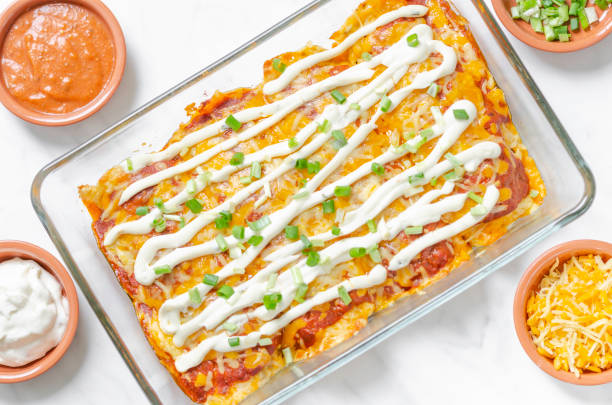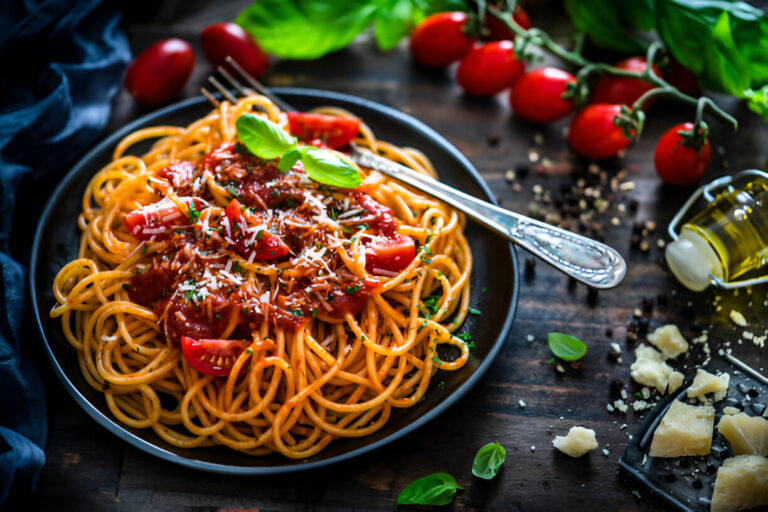Delicious Pasta Homemade Recipes You Can Make Today
There’s something truly special about homemade pasta that elevates a meal from ordinary to extraordinary. The process of creating fresh pasta from scratch is not only a delightful culinary adventure but also a rewarding experience that connects you to centuries of tradition. Picture the simplicity of flour, eggs, and a touch of water transforming into luscious noodles filled with endless possibilities for flavor and texture. When you make pasta at home, every bite is a testament to your skill and creativity, allowing you to tailor dishes to suit your taste preferences.
Making pasta at home offers numerous benefits that go beyond just taste. Firstly, you have complete control over the ingredients, enabling you to make healthier choices or cater to specific dietary needs, such as gluten-free options. The freshness of homemade pasta dramatically enhances the flavor of your meals, as nothing compares to the taste of pasta that has just been made. Additionally, the process itself can be a wonderful bonding experience, whether you’re cooking alone or with family and friends, making memories in the kitchen as you share tips and laughter.
This article is designed as an ultimate guide to homemade pasta recipes, providing you with everything you need to know from the history of pasta to choosing the right ingredients and types. You’ll find detailed recipes that guide you step-by-step through the making of classic egg pasta, vivid spinach fettuccine, and even gluten-free pasta options. Whether you’re a novice cook or an experienced chef, this resource aims to inspire creativity in your kitchen and help you master the art of pasta making.
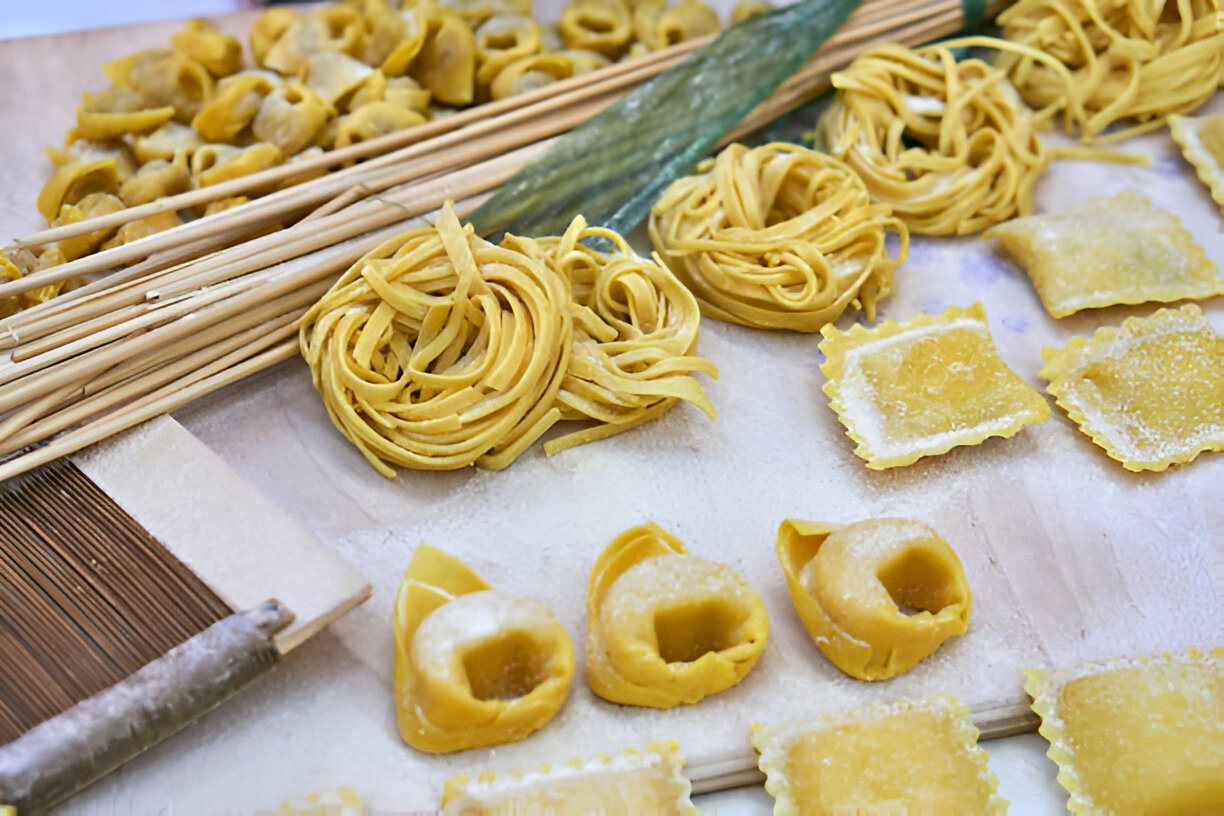
The History of Pasta
Pasta, a culinary staple beloved around the world, has origins that can be traced back thousands of years. While its earliest documents can be found in ancient Italy, it’s believed that the concept of unleavened dough originated in Asia. Historical texts suggest that the Chinese were making noodles as far back as 2000 B.C. When Marco Polo traveled to China in the 13th century, he introduced these noodle dishes to Italy, where they began to evolve into the pasta we know today.
Over the centuries, pasta has undergone significant transformations. Different regions of Italy proudly developed their own unique varieties and shapes, with each reflecting local ingredients and traditions. By the 19th century, pasta had become a household staple across the country, resulting in the boom of commercial pasta manufacturing. Italian immigrants brought pasta to the United States, where it quickly gained popularity and has since become an integral part of American cuisine.
Pasta’s evolution is not merely culinary; it holds cultural significance in many cuisines around the globe. In Italy, it symbolizes family and tradition, often served during communal meals. Various cultures have embraced pasta, each adding its twist, such as Asian noodle dishes or East African ugali, showcasing pasta’s versatility in both texture and taste. The history of pasta is a testament to its ability to unite people over a shared love for good food.
Types of Homemade Pasta
When it comes to homemade pasta, the variety is endless. Understanding the different types can help you choose the best option for your culinary creations. Homemade pasta can generally be categorized into three main types: fresh pasta, dried pasta, and specialty pasta.
Fresh Pasta
Fresh pasta is made using simple ingredients like flour and eggs. It’s characterized by its soft texture and ability to hold sauces beautifully. Common varieties of fresh pasta include:
- Fettuccine: Flat, ribbon-like noodles that pair well with creamy sauces.
- Linguine: Similar to fettuccine but slightly narrower, excellent for seafood dishes.
- Ravioli: Stuffed pasta pillows that can be filled with a variety of ingredients such as cheese or vegetables.
Dried Pasta
Dried pasta is typically produced in large quantities and has a longer shelf life compared to fresh versions. It’s made through a process that involves extruding the dough and then drying it until it’s hardened. Popular dried pasta varieties include:
- Spaghetti: Long, thin noodles perfect for marinara or bolognese sauces.
- Penne: Short tubes with angled edges, ideal for baked dishes and robust sauces.
- Fusilli: Twisted noodles great for holding onto sauces in salads or main dishes.
Specialty Pasta
With the growing trend towards dietary preferences, specialty pasta options have gained popularity. These include:
- Gluten-Free Pasta: Made from alternative flours such as rice or chickpeas, catering to those with gluten intolerances.
- Whole Wheat Pasta: A healthier option than regular pasta, made from whole grain flour, providing more nutrients and fiber.
Each type of pasta offers unique flavors and textures that enhance a variety of dishes, making homemade pasta-making a truly rewarding experience.
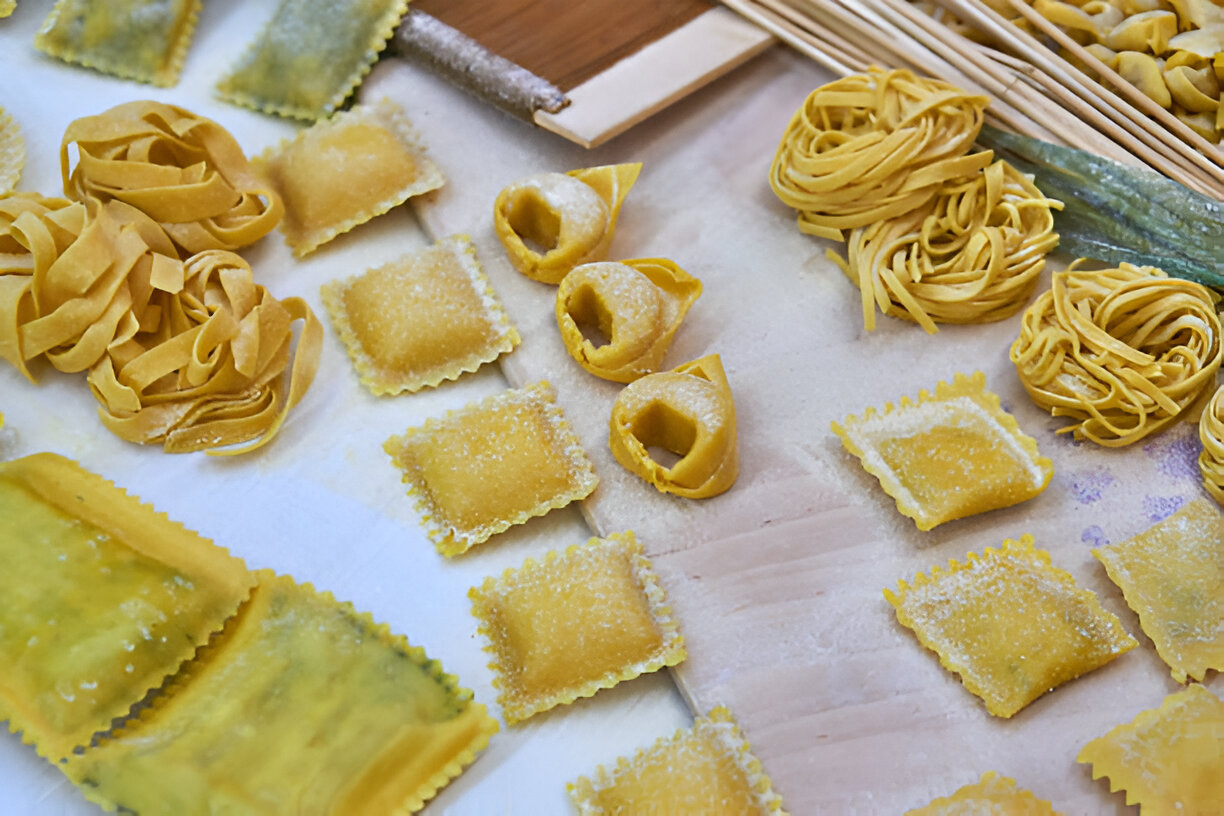
Basic Ingredients for Making Pasta
To create delicious homemade pasta, it’s essential to understand the basic ingredients that form the foundation of your dough. Quality ingredients will significantly impact the taste and texture of the final product. Here’s a breakdown of the key components:
- Flour Types: The type of flour used can yield different results. For traditional pasta, 00 flour is preferred due to its fine texture and high protein content. Semolina flour is another option that provides a slightly gritty texture, ideal for a more rustic feel. Whole wheat flour can also be used, offering a nutty flavor and more nutrients.
- Eggs: Eggs act as a binding agent, enriching the pasta with flavor and a beautiful golden hue. The yolks, in particular, add moisture and richness to the dough.
- Water and Salt: A small amount of water may be added to achieve the right consistency, while salt enhances the flavor of the pasta.
- Optional Ingredients: For added color and flavor, consider using pureed vegetables like spinach or beetroot, or even herbs such as basil or parsley. These ingredients can make your pasta visually appealing and delicious.
Homemade Pasta Recipes
Classic Egg Pasta Recipe
This classic recipe is a great starting point for those new to pasta making. The result is a tender and versatile dough that can be shaped into various pasta types.
Ingredients:
- 2 cups of 00 flour
- 3 large eggs
- 1/2 teaspoon of salt
Directions:
- Create a well with the flour on a clean surface.
- Add the eggs and salt into the well.
- Using a fork, beat the eggs and gradually incorporate the flour until a dough forms.
- Knead the dough for about 8-10 minutes until smooth and elastic.
- Wrap the dough in plastic wrap and let it rest for 30 minutes at room temperature.
- Roll out the dough using a pasta machine or rolling pin to your desired thickness.
- Cut it into your preferred shapes (fettuccine, tagliatelle, etc.) and cook as desired.
Advice:
For perfect pasta, practice rolling and cutting evenly. Dust your work surface with flour to prevent sticking.
Spinach Fettuccine Recipe
This vibrant green pasta not only looks appealing but also packs a nutritional punch.
Ingredients:
- 2 cups of flour
- 1 cup of cooked and squeezed spinach
- 3 large eggs
Directions:
- Blend cooked spinach with eggs until smooth.
- In a large bowl, combine the flour and spinach mixture to form a dough.
- Knead the dough for 6-8 minutes, then wrap it in plastic wrap and let it rest for 30 minutes.
- Roll out the dough and cut into fettuccine shapes.
Advice:
Experiment with different pureed vegetables for variation. Store any excess pasta in the refrigerator for up to 2 days.
Gluten-Free Pasta Recipe
This recipe offers a delicious alternative for those avoiding gluten without compromising on texture or flavor.
Ingredients:
- 2 cups of gluten-free flour blend
- 2 large eggs
- 1 tablespoon of olive oil
- Water (as needed)
Directions:
- In a bowl, mix the gluten-free flour and eggs to form a dough.
- Add olive oil and mix until fully incorporated. If the dough is too dry, add a little water to reach the desired consistency.
- Knead the dough for about 5 minutes, then let it rest for 30 minutes.
- Roll out the dough to your preferred thickness and cut it into your desired shapes.
Advice:
Focus on achieving the right consistency; the dough should be elastic but not sticky. It may require a bit more practice to perfect gluten-free pasta.
Cooking and Serving Homemade Pasta
Cooking homemade pasta is straightforward but requires some attention to detail for the best results. Here are some essential tips:
- Salt in the Water: Always add a generous amount of salt to the boiling water (about 1-2 tablespoons per gallon). It enhances the flavor of the pasta.
- Timing: Fresh pasta cooks quickly, typically within 2-4 minutes. Keep a close eye to avoid overcooking.
- Pairing with Sauces: Opt for lighter sauces to allow the flavor of your homemade pasta to shine. Pairing with olive oil, garlic, or fresh herbs can elevate the dish.
- Presentation: Serve your pasta family-style on a large platter or individually, garnished with fresh herbs or cheese, for a polished look.
Storing and Freezing Homemade Pasta
After making your pasta, proper storage ensures it stays fresh. Here are some tips for short-term and long-term storage:
- Short-Term Storage: Fresh pasta can be stored in the refrigerator for a couple of days. Place it in an airtight container or cover it with a damp cloth to prevent it from drying out.
- Long-Term Storage: For longer preservation, freeze fresh pasta. Lay the pasta out in a single layer on a baking sheet and freeze until solid. Once frozen, transfer it to a zip-top freezer bag.
- Thawing and Reheating: When ready to use frozen pasta, cook it directly from the freezer without thawing. Adjust cooking time slightly, as frozen pasta may take an additional minute to cook.
Common Mistakes When Making Pasta
Even experienced cooks can make mistakes while making pasta. Avoid these common pitfalls for the best results:
- Using the Wrong Type of Flour: Different flours yield different textures. Stick to the recommended types for the best outcomes.
- Not Resting the Dough: Allowing the dough to rest is crucial for gluten development, making it easier to roll out.
- Overcooking the Pasta: Fresh pasta cooks significantly faster than dried. Always test for doneness a minute or two before the suggested time.
- Failing to Adjust for Humidity: Humidity can affect the dough’s moisture. If the dough feels sticky, add more flour; if too dry, add a little water.
FAQs
Can I make pasta without eggs?
Yes, you can make pasta without eggs. Simple recipes use just flour and water for an egg-free dough, suitable for vegan diets.
What is the best flour for homemade pasta?
The best flour for homemade pasta is 00 flour, thanks to its low protein content, which creates a tender and stretchy dough. Semolina flour is also an excellent choice for a slightly different texture.
How long does it take to cook fresh pasta?
Fresh pasta typically cooks in 2-4 minutes, depending on the thickness. Always taste a piece to ensure it’s cooked to your liking.
Can I dry homemade pasta?
Yes, homemade pasta can be dried. Lay it out in a single layer to air dry, then store it in a cool, dry place. When properly dried, it can last for several months.
Conclusion
Making pasta at home is a gratifying culinary journey filled with tradition and creativity. With the right ingredients and techniques, you can craft delicious pasta dishes that reflect your taste and style. Don’t hesitate to explore and experiment with various recipes and flavors, and share your delightful experiences with others.
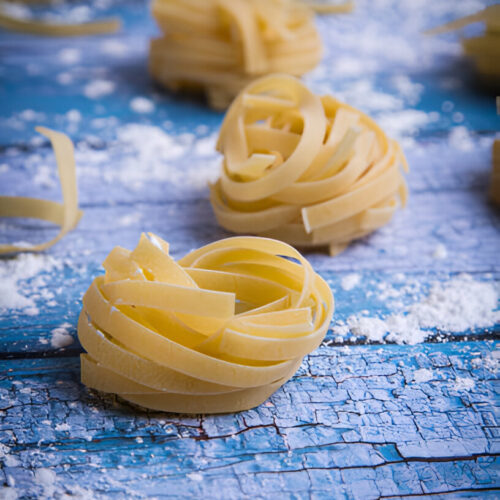
pasta homemade recipes
Equipment
- 1 mixing bowl
- 1 rolling pin
- 1 pasta machine
- 1 clean surface or countertop
Ingredients
- 2 cups all-purpose flour
- 3 large eggs
- 1/2 teaspoon salt
- 1 tablespoon olive oil Optional
Instructions
- In a mixing bowl, combine the flour and salt. Make a well in the center of the flour.
- Crack the eggs into the well of the flour and add the olive oil (if using).
- Using a fork, beat the eggs gently and gradually incorporate the flour starting from the inner rim of the well.
- Once the dough starts to form, use your hands to bring it together into a ball. If the dough is too sticky, sprinkle in a little more flour.
- Knead the dough on a clean, floured surface for about 8-10 minutes until smooth and elastic.
- Wrap the dough in plastic wrap and let it rest for 20 minutes to relax the gluten.
- After resting, divide the dough into four smaller portions. Take one portion and keep the others covered to prevent drying out.
- Roll out the portion on a floured surface using a rolling pin or pass it through a pasta machine until you reach your desired thickness.
- Cut the rolled-out pasta into your desired shape: fettuccine, pappardelle, or lasagna sheets.
- Dust the cut pasta with flour to prevent sticking and set it aside while you prepare the rest.
- Cook the fresh pasta in boiling salted water for about 1-2 minutes until al dente.
- Enjoy your homemade pasta with your favorite sauces!




